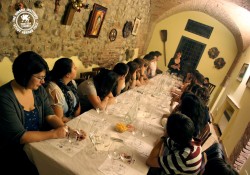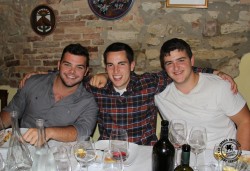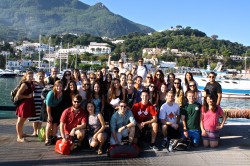Students in the Food Studies course, STFS 330 Sustainability and Food Production in Italy, are launching a new project this semester at the Umbra Institute. This project provides students with the opportunity to get out into the Perugian community and combine their class studies with real-world application. The students will be organizing and implementing a plan to introduce doggy bags at three well-known restaurants in Perugia.
The use of doggy bags or take-home boxes is not a common occurrence in Italy, as it is in countries like the United States. However, Italians tend to be very conscious of environmental and sustainability issues. This project is therefore aimed at introducing the idea of take-home boxes and doggie bags into Perugian culture, as taking home leftovers ultimately reduces the amount of food waste and promotes a more sustainable lifestyle.
The three Perugian restaurants that are the basis for the project, Al Mangiar Bene, Osteria a Priori, and Pachamama were chosen due to their current sustainability practices. The class has met several times with the restaurant owners, collaborating with them on how to execute the project. The project is sponsored by the city government and supported by the waste management company GESENU, which will produce the packaging.
The class was divided into three groups, each with a different task for the project as a whole: survey/data collection, logo/slogan creation, and marketing materials. On October 4th, students Mark Koussa Jr. from Merrimack College and Kirti Nahar from Babson College kicked off the first step of the project by distributing surveys for customers of Al Mangiar Bene. These surveys asked the patrons about their openness to using take-home bags and boxes. Osteria a Priori and Pachamama were visited in the following days. Of the 20 survey results so far, 75% of survey-takers are interested in using a take-home container.
The logo/slogan group is already busy designing their part of the project, and will be collaborating with an Italian graphic designer this week. Afterward, the marketing group will set up informational cards on the restaurant tables and distribute take-home boxes and bags to the restaurants.
We will post more updates on the progress of this incredible project as it develops! Until then, check out the websites of the restaurants our students are working with.














